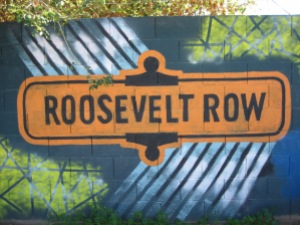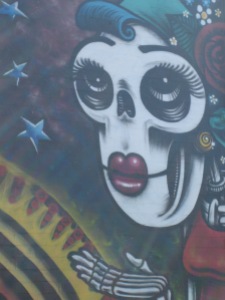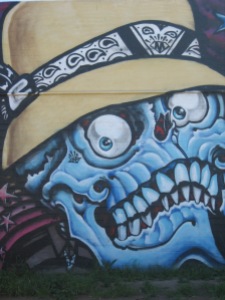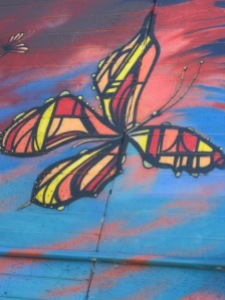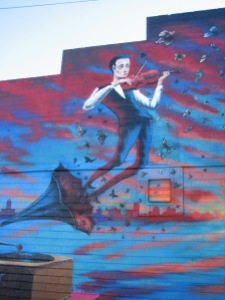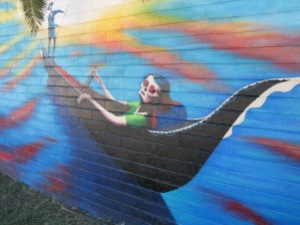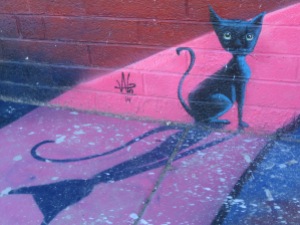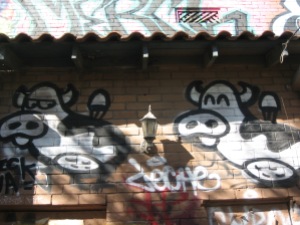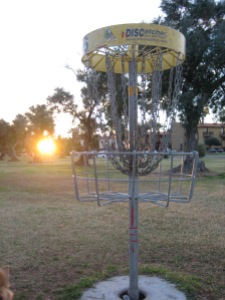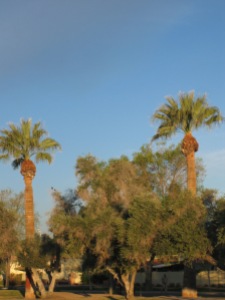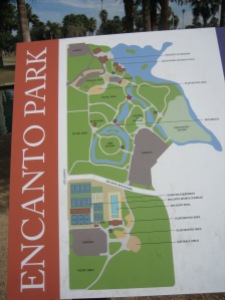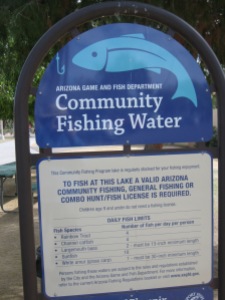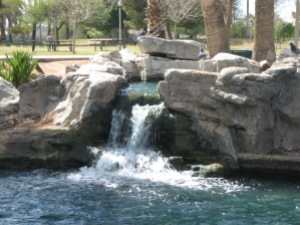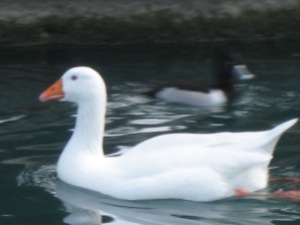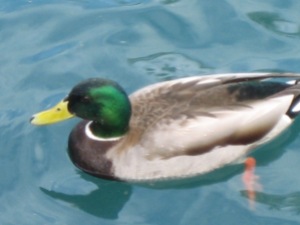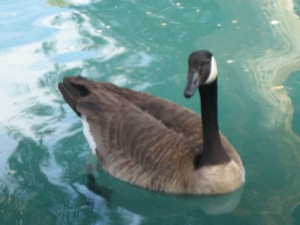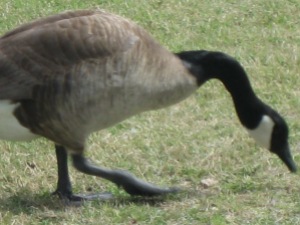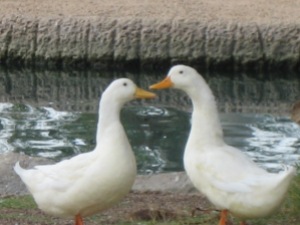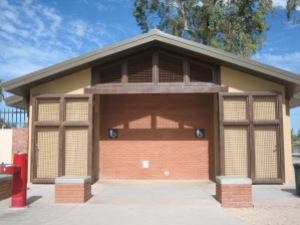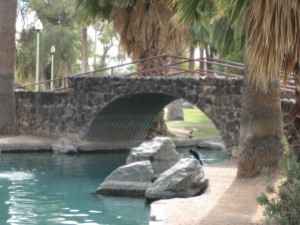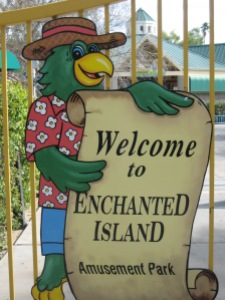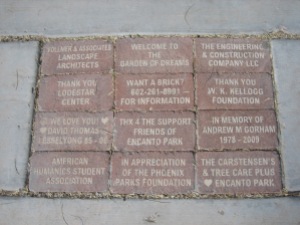I didn’t grow up in the desert, but after two guided tours at the Organ Pipe Cactus National Monument and a couple of hours at the Desert Botanical Garden, I’ve learned a few things about cacti and other desert plants.
For example, what makes a plant a cactus? I first contemplated this question when Ranger Mark told me during a restroom break on the Ajo Mountain Drive tour that the ocatillo is not a cactus. When I asked him what makes a plant a cactus, he admitted he didn’t know. Low and behold, at the Desert Botanical Garden, I found the answer. All cacti have areoles. If there’s no areole, the plant is not a cactus.

All cacti have areoles. If there’s no areole, the plant is not a cactus. This photo was taken at the Desert Botanical Garden.
So just what is the areole of a cactus? According to the Encyclopaedia Britannica (http://www.britannica.com/science/areole),
Cacti can be distinguished from other succulent plants by the presence of areoles, small cushionlike structures with hairs and, in almost all species, spines or barbed bristles (glochids). Areoles are modified branches, from which flowers, more branches, and leaves (when present) may grow.

It is easy to see the areoles on the Straight-spined Barrel Cactus in this photo. The areoles are the dark areas from which the spines are growing. Notice that several spines grow from each areole. I took this photo at the Desert Botanical Garden in Phoenix
The Encyclopaedia Britannica (http://www.britannica.com/plant/Caryophyllales#ref594853) elaborates,
Areoles are universal in the cactus family (at least in the juvenile phase)…Almost all species of cactus have tufts of spines that develop from the areoles. These spines are of two basic types, stiff central spines located in the middle of the areole or radial spines that grow out laterally from the edges of the areole; the former are probably protective or when brightly coloured attract pollinators, while the latter are often white and reflect sunlight, providing shade and protecting the plant body from solar radiation. In addition, these spines may be variously modified, depending on the species; for example, they may be curved, hooked, feathery, bristly, flattened, sheathed, or needlelike.

I took this photo of an ocatillo on BLM land adjacent to the Ajo Scenic Loop in Arizona . While I was visiting, I saw no ocatillo with leaves or flowers.
So if an ocatillo isn’t a cactus, what is it? According to the Arizona-Sonora Desert Museum plant fact sheet (https://www.desertmuseum.org/kids/oz/long-fact-sheets/Ocotillo.php),
Ocotillo (Fouquieria splendens)…are…large shrub[s] with long cane-like unbranched spiny stems that grow from a short trunk.
I’ve recently learned many things about the saguaro cactus, most importantly, it is found only in the Sonoran Desert. Although the saguaro may be the cactus that really represents the desert for for a lot of people, if you see a saguaro representing the desert in New Mexico or Utah, or Nevada, well, that’s just wrong. According to https://en.wikipedia.org/wiki/Saguaro,
[The saguaro] is native to the Sonoran Desert in Arizona, the Mexican State of Sonora, and the Whipple Mountains and Imperial County areas of California.
I also learned saguaros often grow with the help of a nurse plant. According to a brochure I got at the Organ Pipe Cactus National Monument,
This photo shows a saguaro cactus growing within the protection of its nurse plant. I took this photo on the Red Tanks Tinaja hike in the Organ Pipe Cactus National Monument.
[a]lmost any plant can become a nurse plant. Shade from the nurse plant protects the delicate cactus seedling from temperature extremes and sunburn. Shaded soil holds moisture longer. Slowly decaying leaf litter adds nutrients. Leaf litter hides the tender young plant from hungry birds or animals…
A nurse plant is not mandatory for the growth and health of a saguaro, but as the brochure says,
The saguaro cactus seedling grows best in this protected, humid environment and enriched soil beneath its nurse plant.
Finally, I learned that saguaro cacti grow very slowly. It takes about 10 years for saguaros to grow one inch! Saguaros will have grown about one foot tall after 30 years and about three feet tall after 50 years. Saguaros get their first flowers after about 70 years, when they are approximately 6 and 1/2 fee tall. They get their first arm at 15 to 16 feet tall, after about 95 to 100 years, and they reach their full height of about 43 feet when they are around 200 years old. (All of the information in the preceding paragraph is from the brochure mentioned earlier.)

I took this photo of an organ pipe cactus on the BLM land adjacent to the Ajo Scenic Loop in Arizona.
According to https://en.wikipedia.org/wiki/Stenocereus_thurberi,
Stenocereus thurberi, the organpipe [sic] cactus…is found mostly in Mexico, mainly in Sonora and southern Baja California. It is also known to the United States, but is much rarer, with the notable exception of Organ Pipe Cactus National Monument. The plant is predominantly found on rocky hillsides up to 3,000 feet (910 m) in elevation. It is sensitive to frost, so the species is rare in low desert areas, which can be more susceptible to frost.
Unlike saguaros organ pipe cactus don’t rely on nurse plants for early help. The brochure says,
Most organ pipe cactus grow out in the open in totally unprotected settings.
And then there’s cholla cactus. According to the Desert USA website (http://www.desertusa.com/cactus/cholla-cactus.html),
Cholla cactus represent more than 20 species of the Opuntia genus (Family Cactacea) in the North American deserts. Cholla is a term applied to various shrubby cacti of this genus with cylindrical stems composed of segmented joints. These stems are actually modified branches that serve several functions — water storage, photosynthesis and flower production.
[C]hollas are the only cactus with papery sheaths covering their spines. These sheaths are often bright and colorful, providing the cactus with its distinctive appearance.
Opuntia are unique because of their clusters of fine, tiny, barbed spines called glochids. Found just above the cluster of regular spines, glochids are yellow or red in color and detach easily from…stems. Glochids are often difficult to see and more difficult to remove, once lodged in the skin.
Before this year, I’d never given much thought to cactus and had no idea how varied and fascinating they are. Now I’m excited to learn more about them.

Seguaro and the moon. I took this photo from my camping spot on the BLM land adjacent to the Ajo Scenic Loop.
I took all of the photos in this post.
















